
Is your sloped yard a challenge? Slopes can be stunning with the right strategies! Terraces and retaining walls sculpt hillsides, prevent soil loss, and elevate your plants. These solutions simplify gardening and add visual appeal. Discover 17 easy ideas to enhance your sloping landscape!
These concepts combine practicality with beauty. They stabilize the ground and encourage plant growth. Customize these ideas to reflect your personal taste. Transform your slope into a backyard highlight!
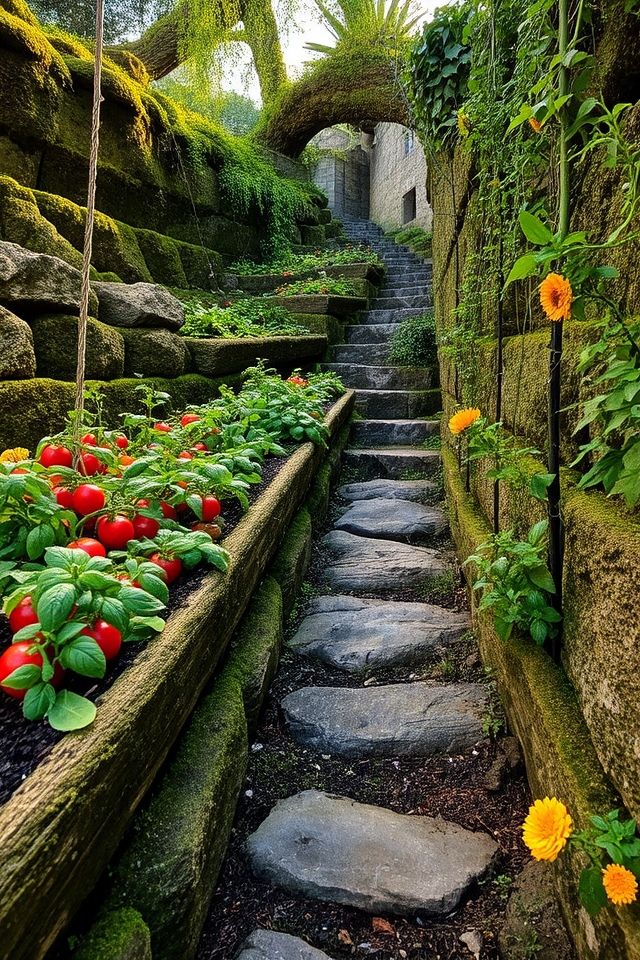
Terraced planting beds convert slopes into useful garden areas by creating flat tiers. They halt soil erosion, control water flow, and make gardening more accessible. Use retaining walls or natural stones to define each level. Perfect for growing vegetables, herbs, or flowers. Ensure good drainage and consider soil composition for optimal growth. They add visual charm while maximizing space on hills.
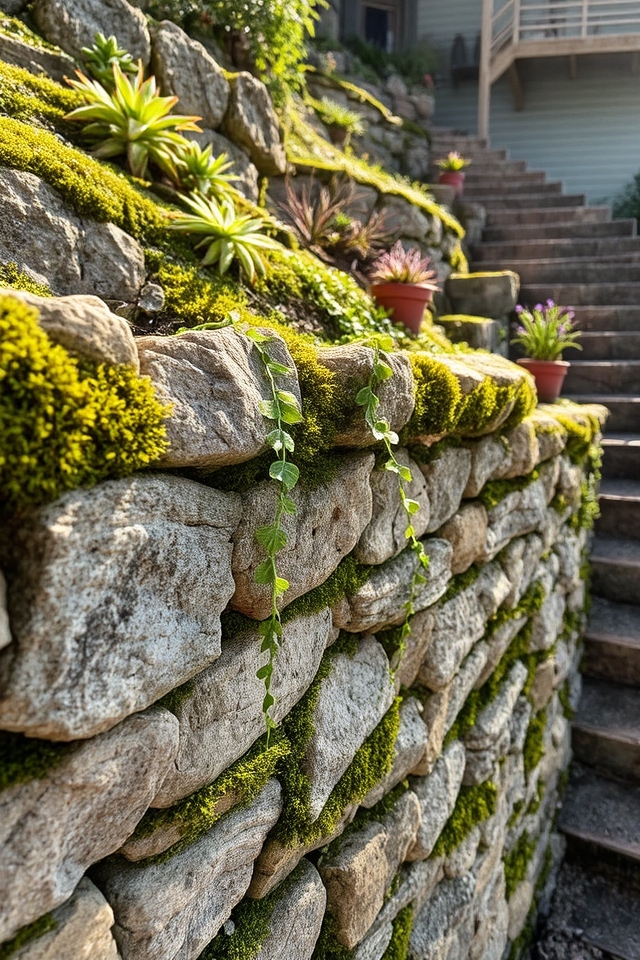
Retaining walls secure slopes by holding back earth and stopping erosion. They form level planting zones, improving both function and appearance. Built from stone, concrete, or wood, they integrate seamlessly into landscapes. Effective drainage prevents water accumulation, ensuring lasting stability. Vertical gardens or terraced layouts can optimize space on sloped properties.
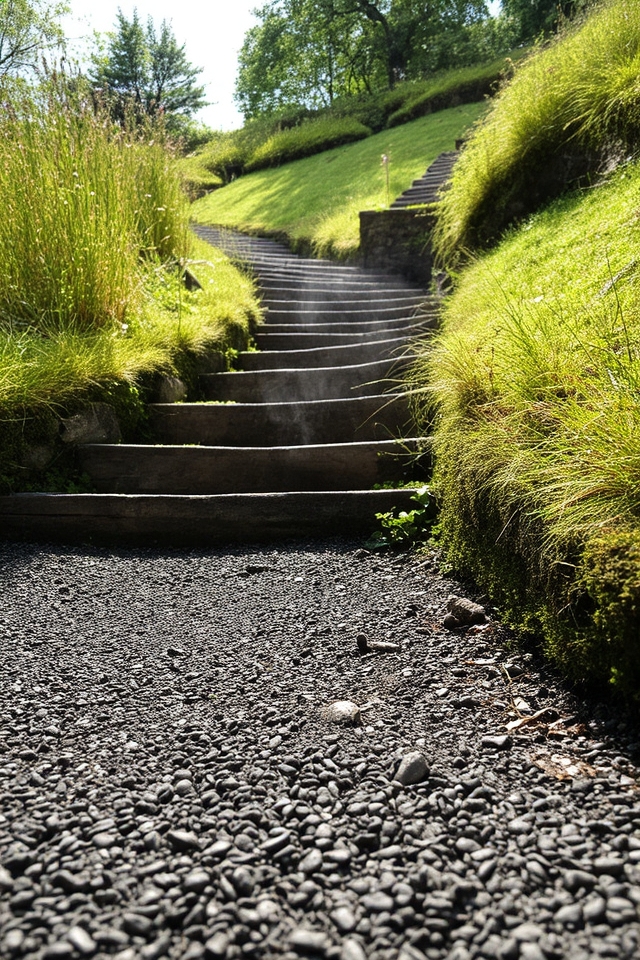
Winding pathways and staircases on slopes improve visual appeal and usability. Use materials like gravel, stone, or wood for added texture. Steps with packed soil or retaining walls stop erosion. Curving paths soften the landscape, while staggered steps provide stability. Plant local plants along the edges for a natural look. Maintain good drainage to prevent water damage. These features offer scenic access and define areas, combining beauty and practicality.
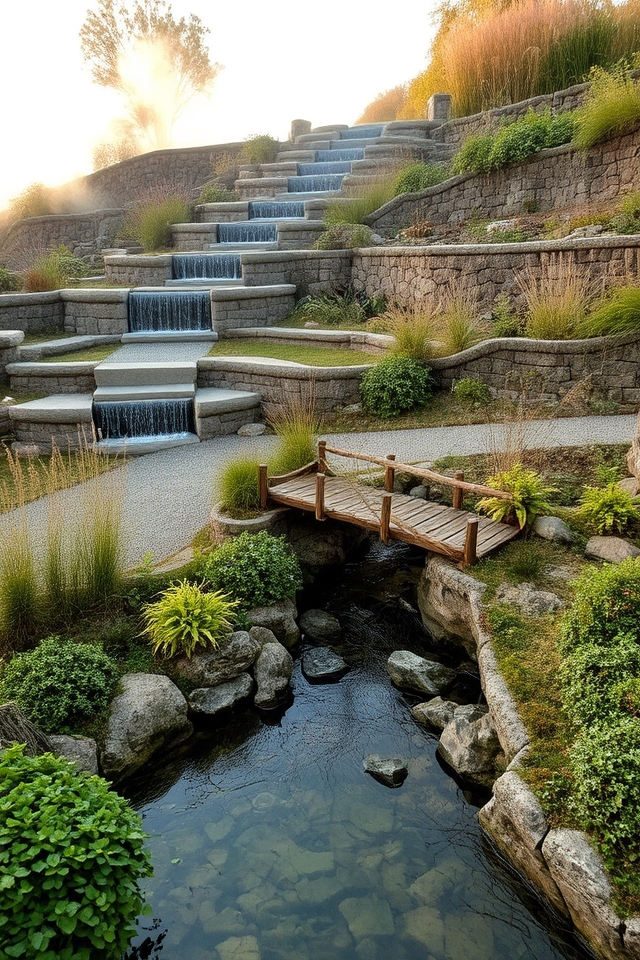
Water features on slopes improve drainage and prevent erosion using terraces, retaining walls, or tiered designs. Ponds, streams, or waterfalls add visual interest while managing water runoff. Proper grading controls water flow, reducing soil loss. Local plants stabilize banks, and integrated lighting highlights the feature at night. Balance function with aesthetics for a sustainable, beautiful landscape.
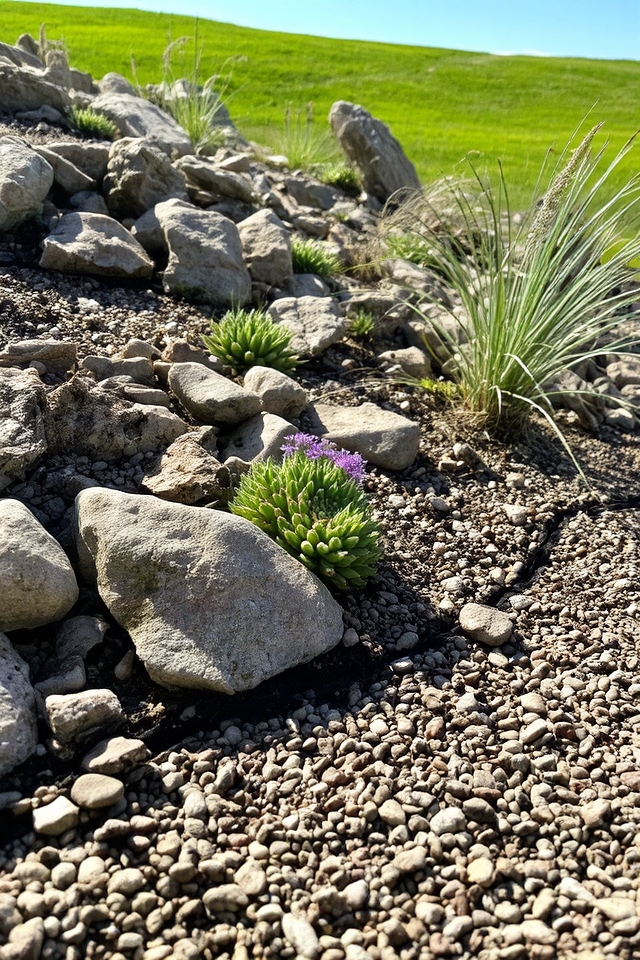
Rock gardens and gravel areas flourish on slopes, using stones and plants that need little water to control erosion. Gravel aids drainage, while rocks add texture. Succulents, sedums, and ornamental grasses thrive here. Low-maintenance and visually appealing, they complement rocky landscapes, providing contrast and resistance to soil movement. Ideal for sloping landscapes.
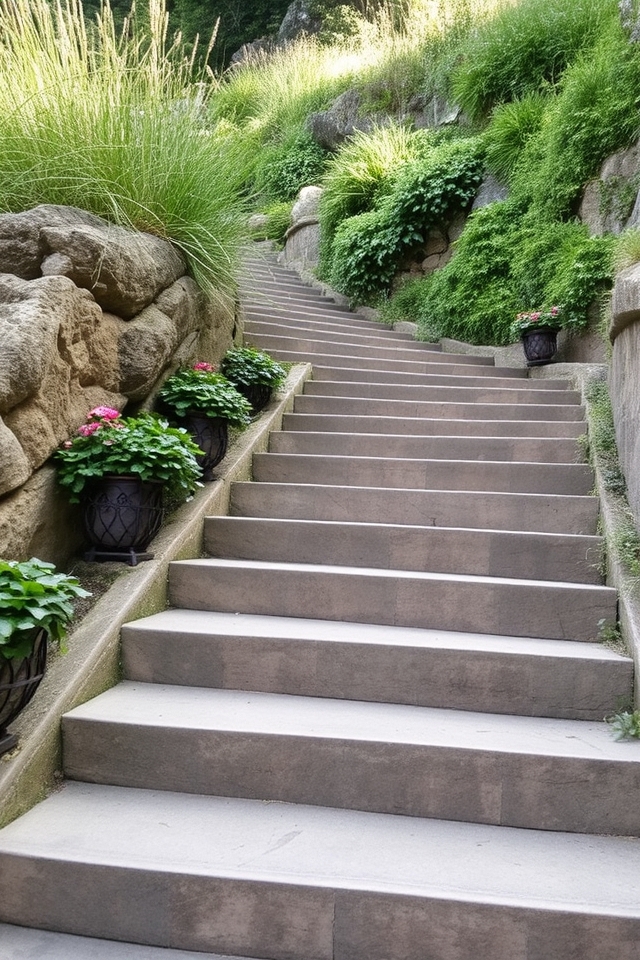
Garden steps and staircases on slopes improve both function and beauty. Use materials like stone, wood, or concrete for lasting use. Ensure correct riser height and tread depth for safety. Add terracing to manage changes in height, adding visual interest. Include edging or planters for definition. Select designs that match the landscape, such as natural rock formations or curved paths. Focus on stability and ease of use while creating a visually attractive connection between levels.
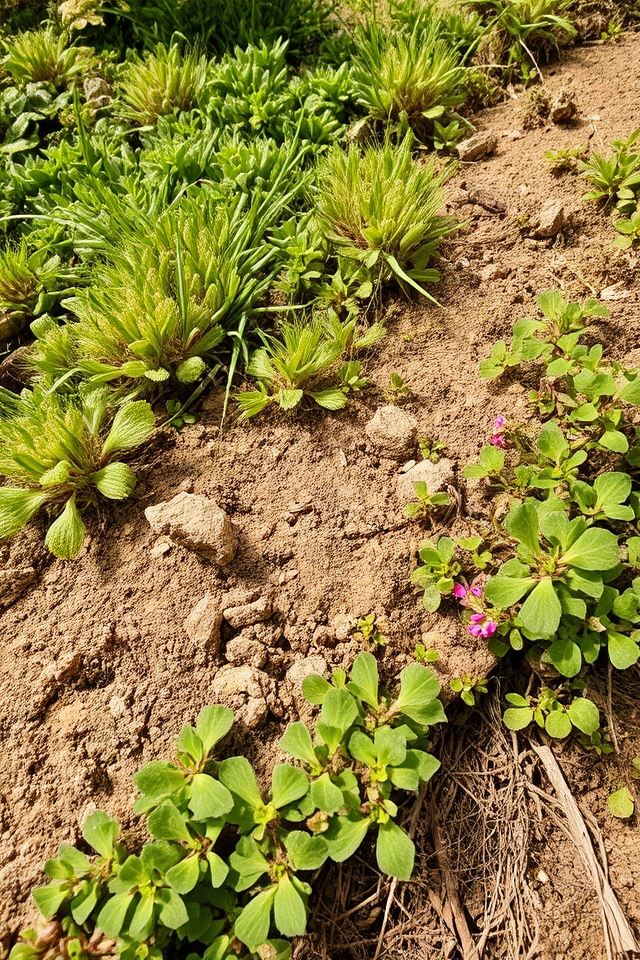
Selecting plants for slopes means choosing species with strong, dense roots to hold soil and prevent erosion. Local plants, like sedums, grasses, or shrubs, do well in local conditions and need less care. Avoid plants with shallow roots. Choose plants that resist drought to reduce watering. Proper spacing ensures coverage, while erosion control plants like groundcovers or perennial flowers improve slope stability and visual appeal.
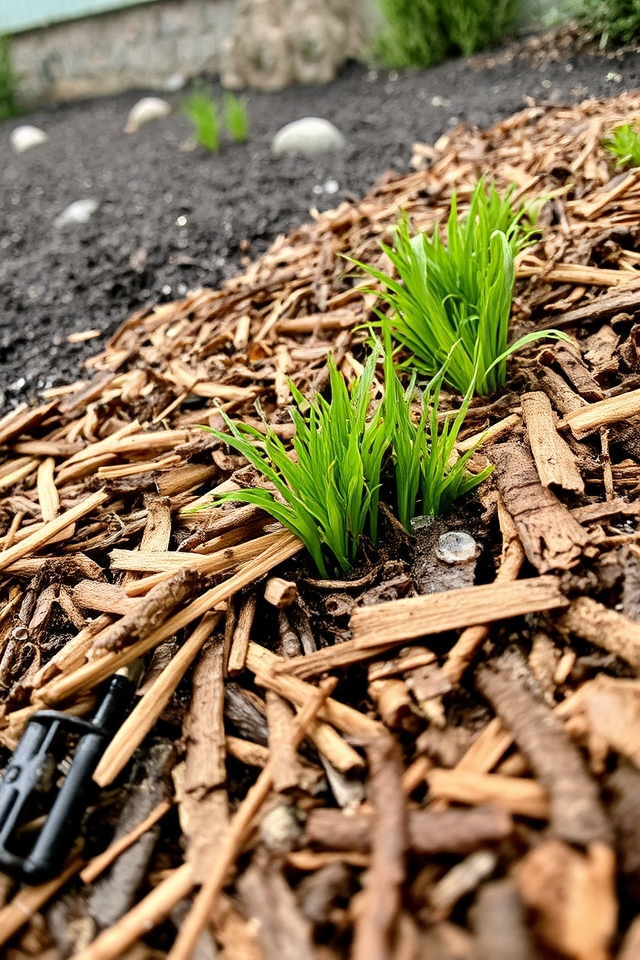
Mulching slopes with organic materials like wood chips, straw, or bark lessens erosion by protecting soil from rain, slowing water flow, and keeping in moisture. It strengthens soil structure, prevents nutrient loss, and promotes root growth. Apply a 2–4 inch layer, keeping it away from plant stems. Avoid synthetic mulches that may repel water. Replenish regularly to keep it effective.
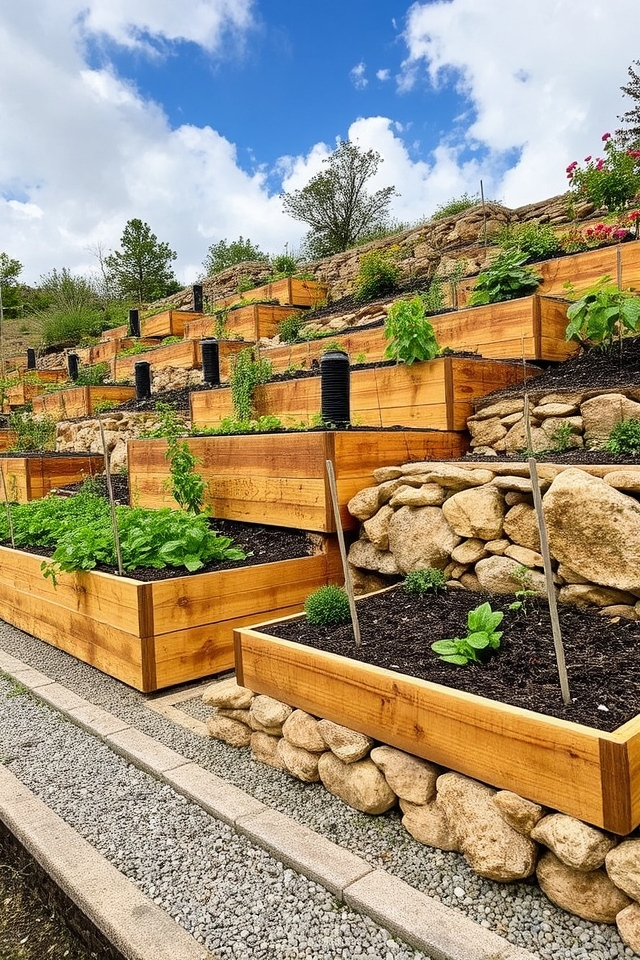
Raised garden beds on inclines improve drainage and prevent soil erosion. Build with strong materials like wood or stone, layering beds to match the slope. Add retaining walls or terraces for stability. Improve access and maximize growing area. Use organic soil mixes for best plant growth. Secure beds with stakes or anchors to resist slope movement. Perfect for gardening on uneven ground.
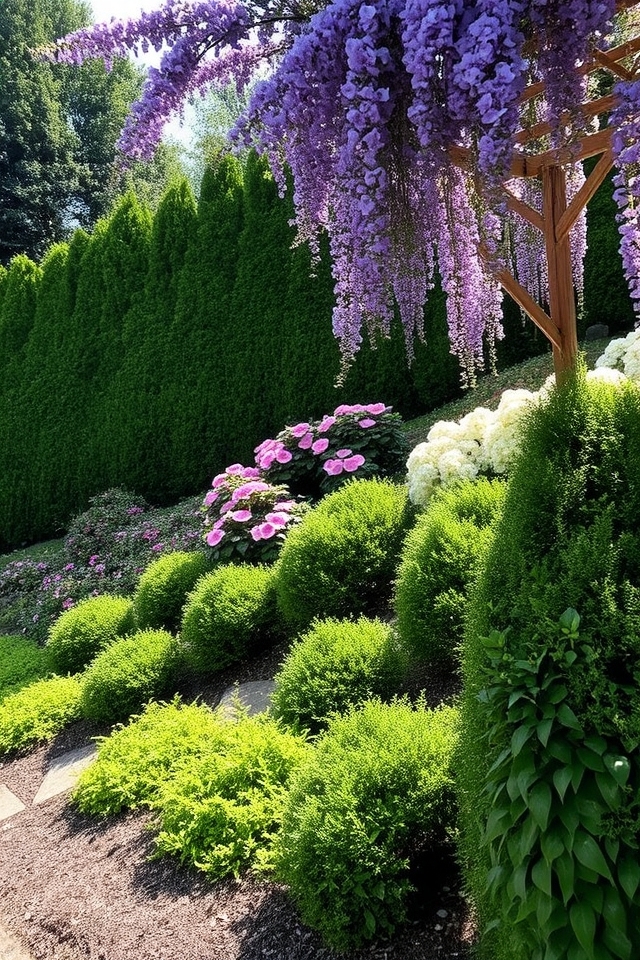
Plant privacy screens on slopes with tall, thick shrubs like privet, boxwood, or holly. Include evergreens such as juniper or arborvitae for year-round cover. Use flowering plants like hydrangeas or camellias for visual appeal. Arrange plants in layers to maximize height and thickness. Ensure species can handle slope conditions, with deep roots to hold soil. Add trellises for climbers like wisteria to improve screening.
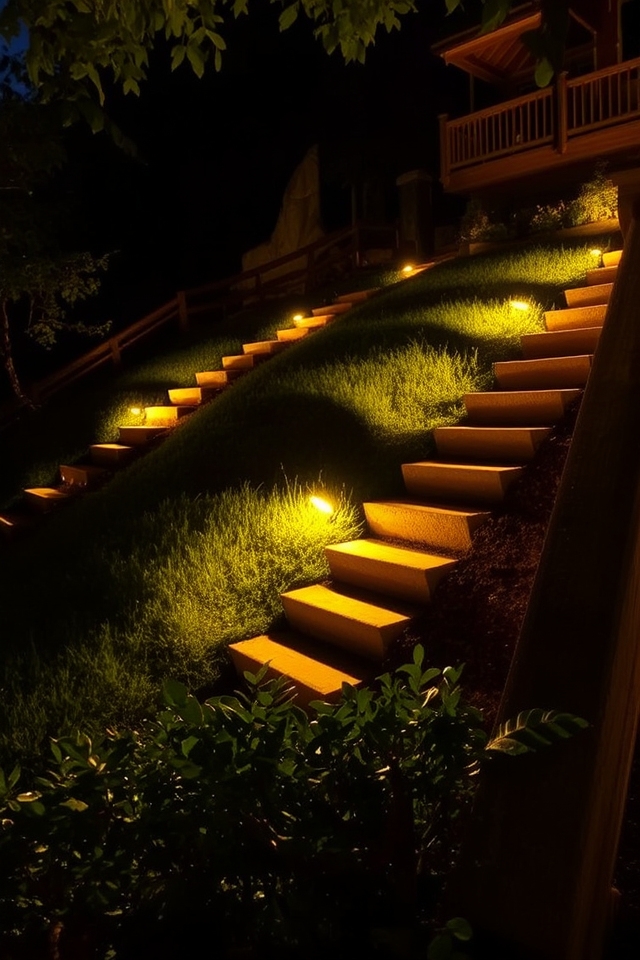
Landscape lighting for slopes improves safety and beauty by lighting paths and defining levels. Use low-voltage lights, solar options, or buried lights to prevent trips. Place spotlights to highlight terraces or focal points, while path lights provide even, soft light. Secure lights firmly to prevent movement. Choose warm, soft colors to complement the landscape and create a welcoming feel.
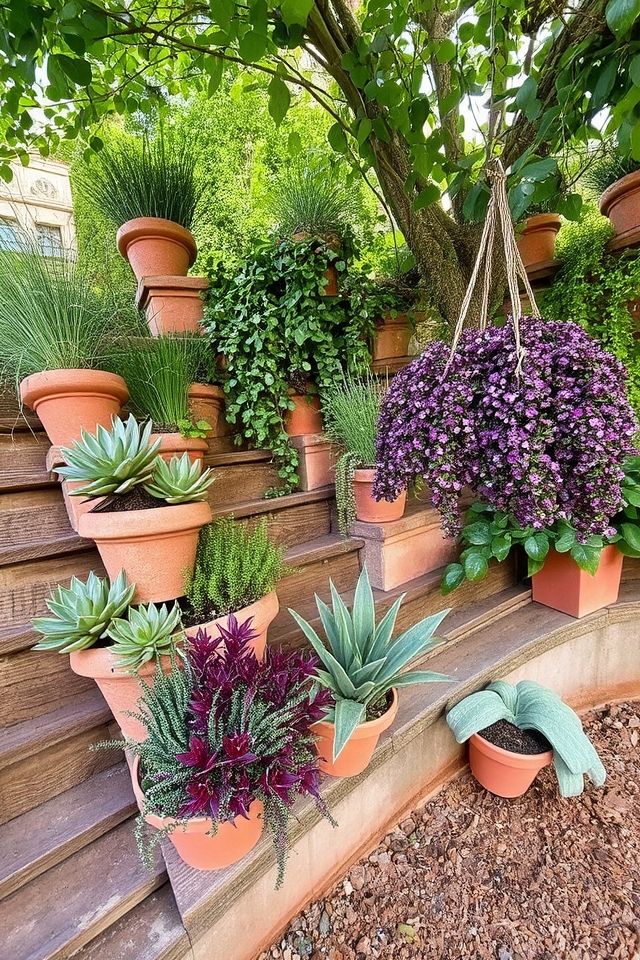
Container gardens on slopes maximize vertical space with stacked planters, hanging baskets, and tiered designs. Use plants in pots that need little water to reduce erosion. This saves ground space, improves drainage, and adds visual interest. Choose small plants for cascading or upright growth. Perfect for small areas, it combines function with beauty on slopes.
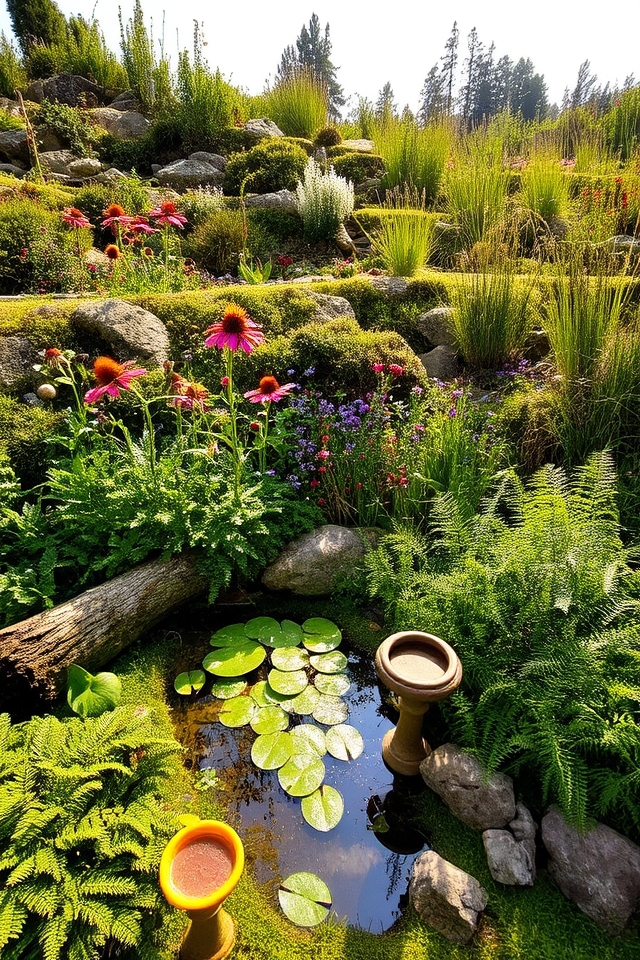
Create slope gardens that help wildlife with local plants, layered greenery, and natural shelters. Use plants with strong roots to hold soil and reduce erosion. Include flowers rich in nectar, shrubs with berries, and thick foliage for nesting. Add shallow water, like a small pond or birdbath, and avoid chemicals to support insects, birds, and small animals. Arrange plants in terraces to control runoff while creating a sustainable habitat.
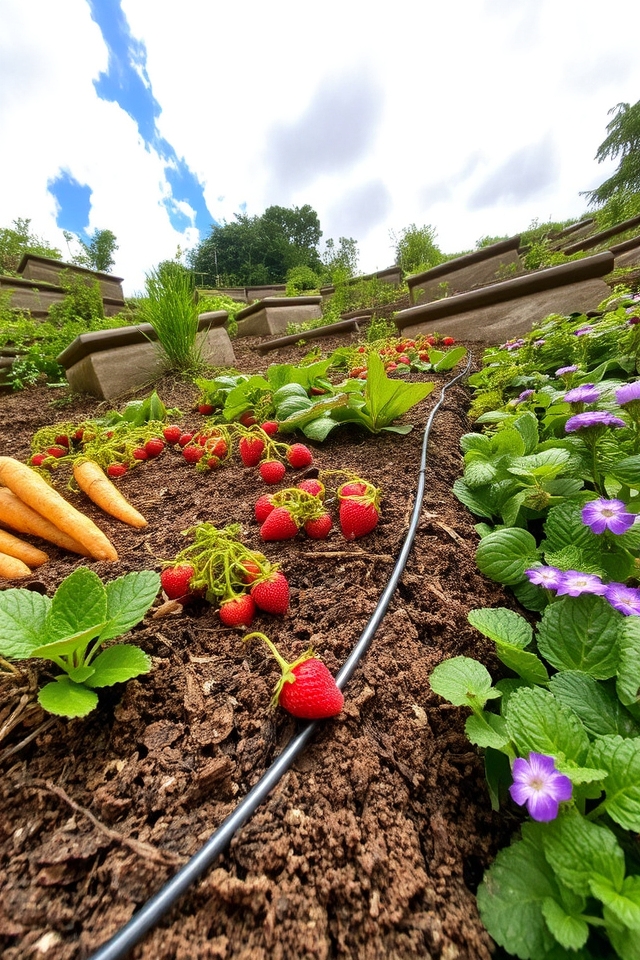
Edible gardens on sloped ground need careful planning to prevent erosion and maximize growth. Use terraces, retaining walls, or raised beds to stabilize soil. Add organic material to improve soil and drainage. Plant cover crops or plants with deep roots like comfrey to bind soil. Contour planting and drip irrigation save water. Choose adaptable crops like potatoes, carrots, or strawberries. Avoid heavy machinery to prevent soil compaction. Regular mulching keeps in moisture and reduces runoff.
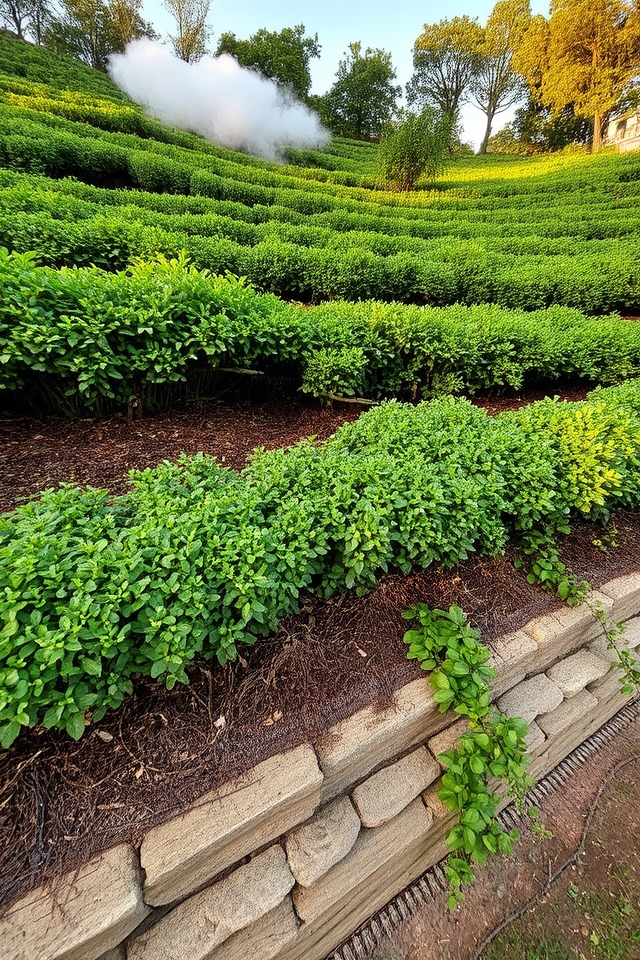
Slope stabilization techniques prevent erosion and landslides by strengthening soil. Methods include planting plants with strong roots, installing retaining walls, and using terracing. Mulching and geotextiles improve soil strength. Proper drainage systems reduce water pressure. These methods ensure stability, protect property, and support sustainable gardening on slopes.
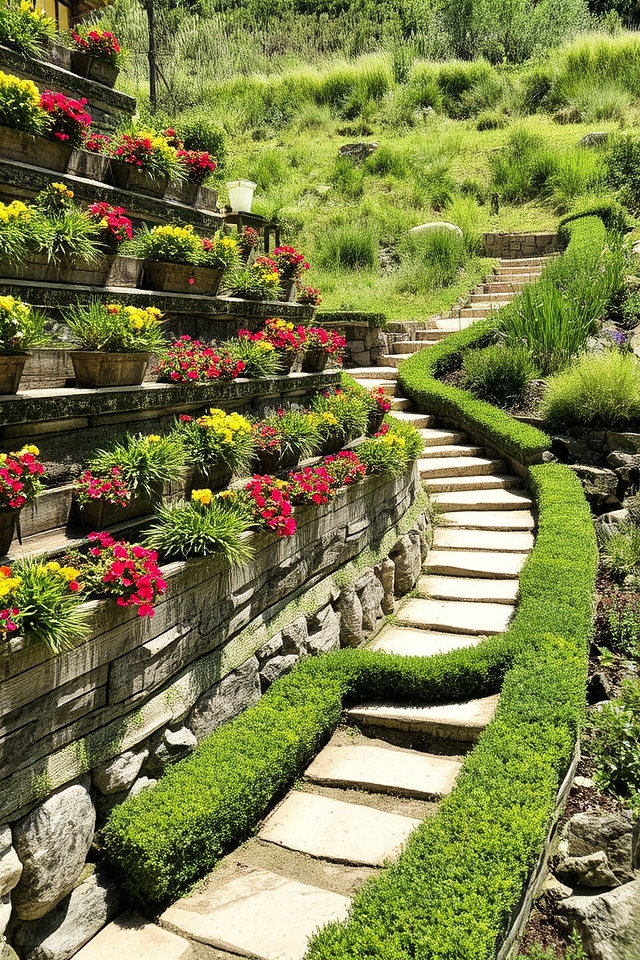
Terraced garden designs use layered levels on slopes to create useful, beautiful spaces. Retaining walls or stone steps define each level, preventing soil erosion and managing water flow. This maximizes usable area, allows for different plants, and adds visual depth. Materials like wood, stone, or concrete improve durability. Terraces can include seating, paths, or water features, combining practicality with natural beauty. Perfect for uneven ground, they turn slopes into structured, welcoming landscapes.
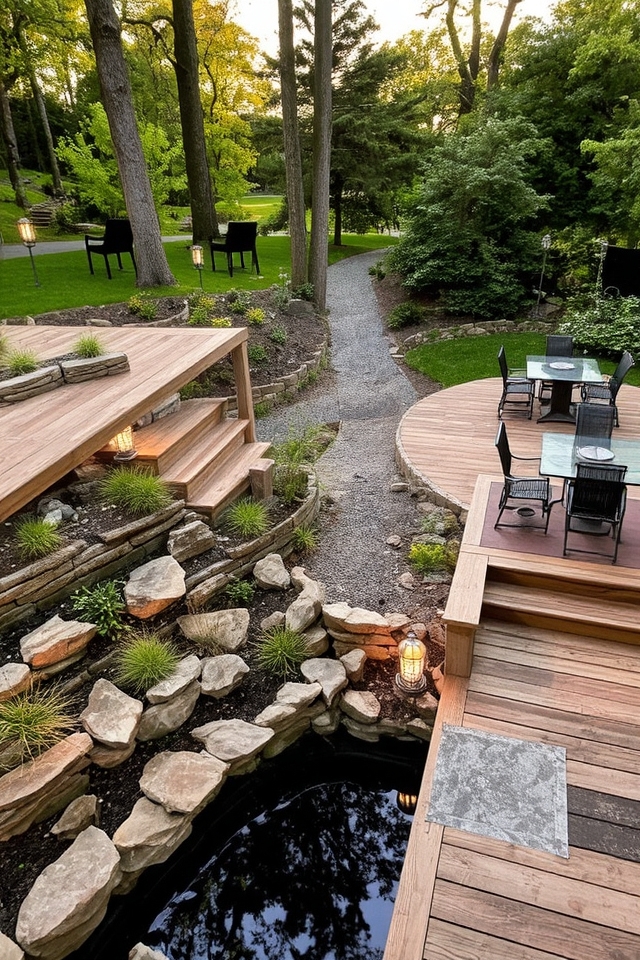
Outdoor living spaces on slopes use terracing, retaining walls, and tiered designs to maximize usability. Add decks, patios, or seating areas that follow the slope, ensuring stability and drainage. Local plants and rock features combine function with beauty, while paths and lighting improve access. Focus on safe, durable materials and create small areas for privacy and comfort.
You transform slopes into flourishing ecosystems, where roots grow deep, paths climb with purpose, and water flows like silver. Each step teaches resilience; each bed shows creativity. Your garden isn’t just land—it’s a living symbol of balance, turning challenges into beauty, one stone at a time.

Don't let aphids, slugs, and caterpillars ruin another plant. Take back control with simple, natural methods that actually work.